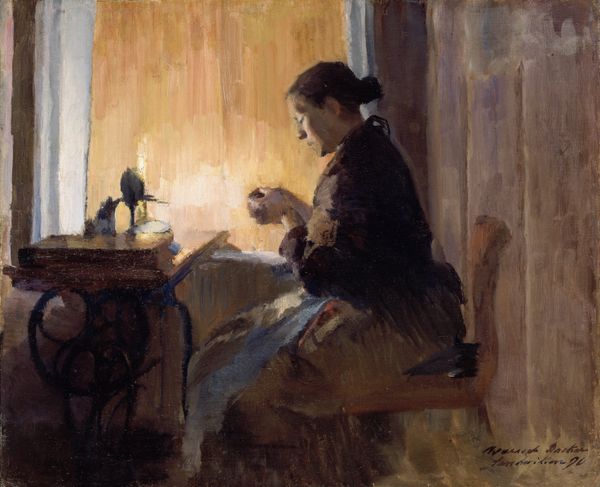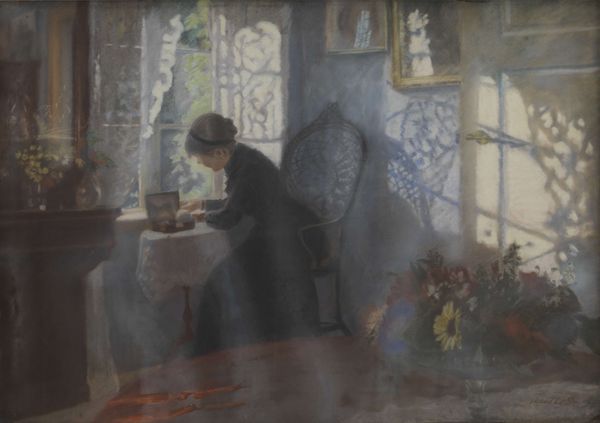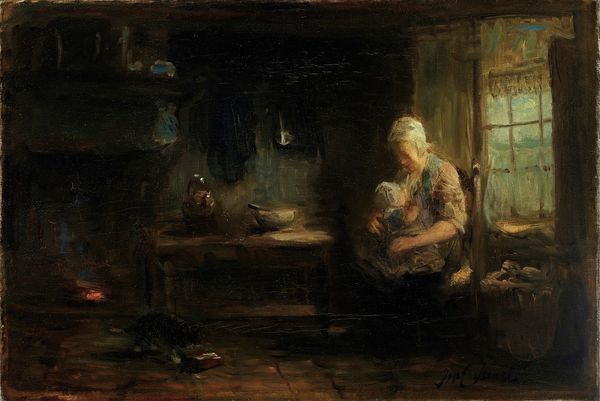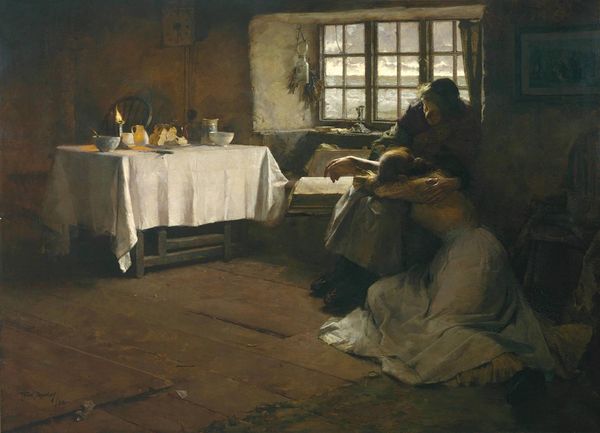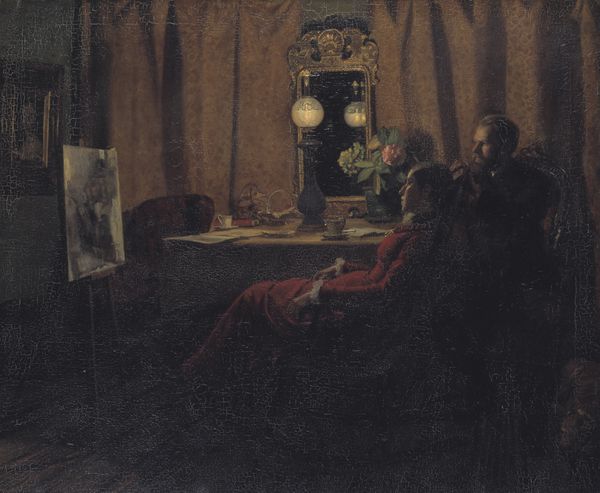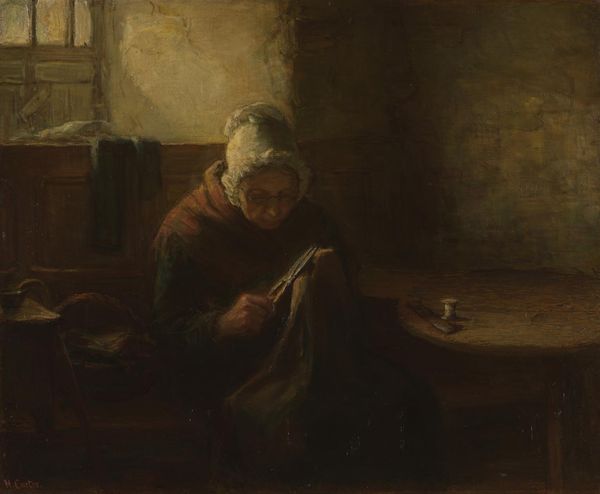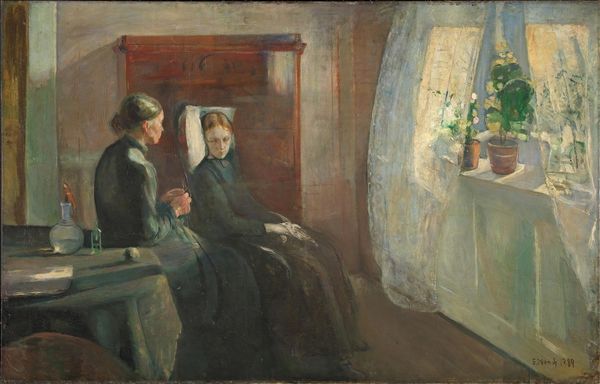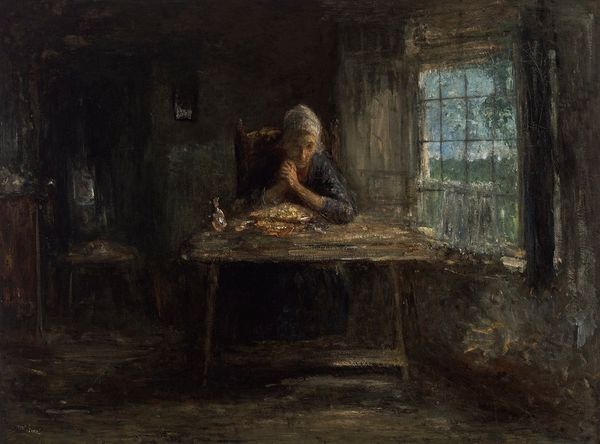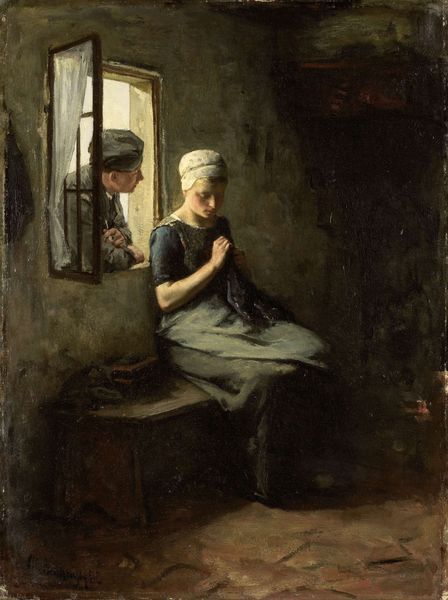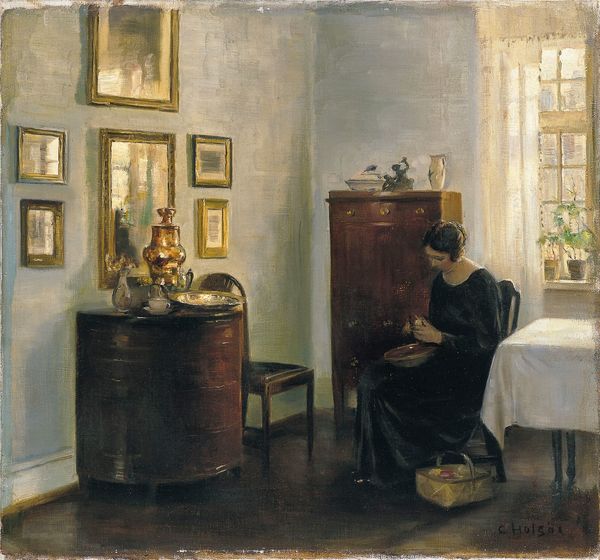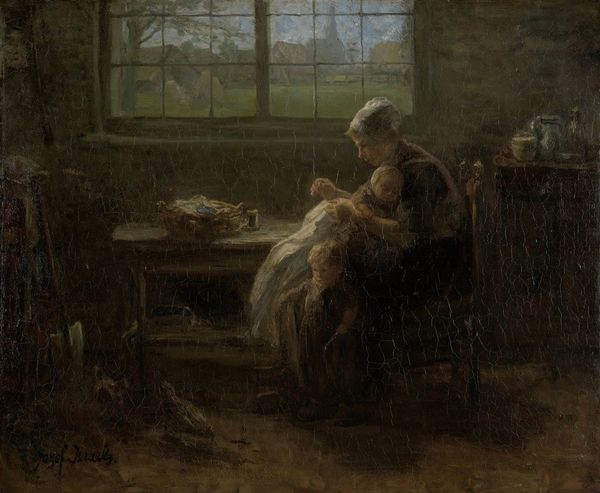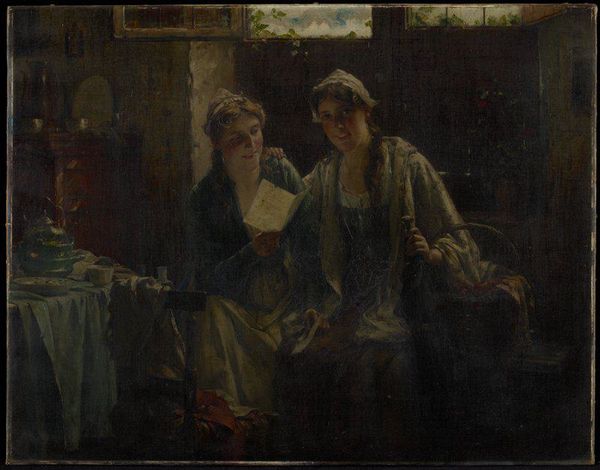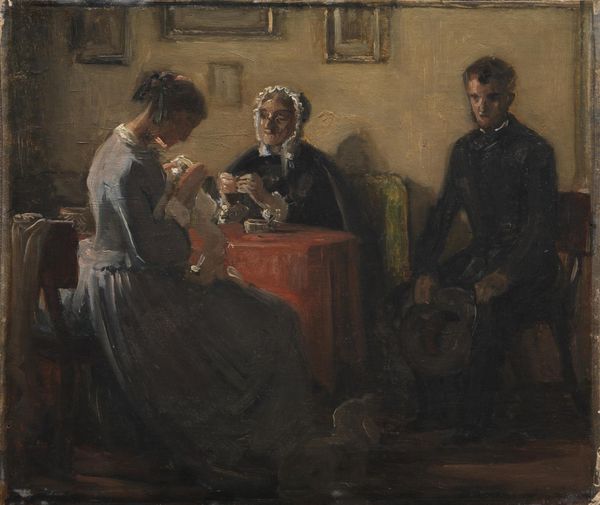
painting, oil-paint
#
portrait
#
painting
#
oil-paint
#
intimism
#
chiaroscuro
#
symbolism
#
genre-painting
Copyright: Public domain
Curator: Looking at this canvas, I feel enveloped by a sense of profound stillness. The darkness is almost tangible. Editor: Yes, Jakub Schikaneder’s “Evening,” painted in 1897, presents such a powerful image of solitude, wouldn't you agree? It makes me consider the role of art in depicting everyday life, and specifically the lives of women in the late 19th century. Curator: Absolutely. The setting is domestic and intimate, and the lone figure is perhaps trapped, but within, or by, herself. The subdued palette really reinforces this sense of introspection and quiet suffering. What does her class mean to her, as well? What choices are or are not open to this woman, given her social position and historical moment? Editor: Right. The subtle realism employed speaks volumes. Schikaneder's choice of subject—an elderly woman, indoors, perhaps widowed—engages in a larger art historical dialogue concerning societal perceptions of aging and invisibility, doesn't it? Especially for women of that time. Curator: Definitely. The light emanating from the lamp casts a very intimate glow, highlighting her presence but simultaneously emphasizing the surrounding shadows. It reminds me of those concepts in feminist literature around the Madonna-whore complex – she could almost be the saint in her cloistered domesticity, trapped between the idealized and the real. Editor: True, and the way he contrasts the light and shadow, this clear example of chiaroscuro, wasn’t uncommon in Symbolist works from the time. Schikaneder captured a psychological depth in such ordinary scenes, creating social narratives with compelling resonance. His work reminds me that every artwork carries a dialogue, intended or unintended, about our shared histories. Curator: Indeed, it becomes evident that this piece is about far more than a solitary figure; it reflects societal structures, constraints, and the nuanced complexities of the feminine experience at the close of the 19th century.
Comments
No comments
Be the first to comment and join the conversation on the ultimate creative platform.
